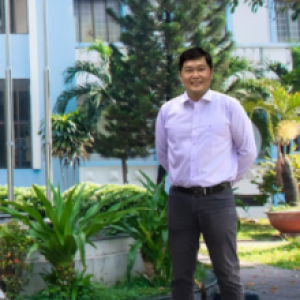OVERVIEW OF SUBMERGED CULTURE AND THE BIOLOGICAL ACTIVITIES OF MEDICINAL MUSHROOM SPECIES
Abstract
Submerged cultivation of medicinal mushrooms is receiving increasing attention and is considered an effective alternative to traditional substrate cultivation methods for producing fungal mycelial biomass and bioactive metabolites with diverse applications. This method allows for the control of culture environment conditions, enabling more efficient synthesis of bioactive compounds such as polysaccharides, triterpenoids, cordycepin, polyphenols, etc. Furthermore, the bioactivity of these compounds, including antioxidant, anticancer, antibacterial, and immunomodulatory effects, further emphasizes the potential of producing medicinal mushroom biomass by submerged cultivation in the pharmaceutical and functional food industries. Submerged cultivation is considered a promising alternative to traditional mushroom fruiting body cultivation because it offers better control over culture conditions and product quality, as well as shorter cultivation times. Submerged fungal cultivation has significant industrial potential; however, there are still challenges in optimizing production yield and scaling up the process for industrial application. The successful application of this method on a commercial scale depends on increasing product yield and developing new production systems to address the issues related to submerged mushroom cultivation techniques. Although many researchers are making efforts to produce bioactive metabolites from fungi, the physiological and technical aspects of submerged cultivation still require extensive and long-term research.
Full text
View PDFPublication Information
Publisher
Thu Dau Mot University, Viet Nam
Editor-in-Chief

Assoc. Prof. Nguyen Van Hiep
Thu Dau Mot University
Thu Dau Mot University
Editorial Board

Assoc. Prof. Le Tuan Anh
Thu Dau Mot University
Thu Dau Mot University

PhD. Nguyen Quoc Cuong
Thu Dau Mot University
Thu Dau Mot University

PhD. Doan Ngoc Xuan
Thu Dau Mot University
Thu Dau Mot University

PhD. Nguyen Khoa Truong An
Thu Dau Mot University
Thu Dau Mot University

Assoc. Prof. Nguyen Thanh Binh
Thu Dau Mot University
Thu Dau Mot University

PhD. Le Thi Thuy Dung
Thu Dau Mot University
Thu Dau Mot University

PhD. Ngo Hong Diep
Thu Dau Mot University
Thu Dau Mot University

PhD. Nguyen Duc Dat Duc
Ho Chi Minh City University of Industry and Trade
Ho Chi Minh City University of Industry and Trade

Assoc. Prof. Nguyen Van Duc
Animal Husbandry Association of Vietnam
Animal Husbandry Association of Vietnam

PhD. Nguyen Thi Nhat Hang
Department of Education and Training of Binh Duong Province
Department of Education and Training of Binh Duong Province

PhD. Nguyen Thi Cam Le
Vietnam Aviation Academy
Vietnam Aviation Academy

PhD. Trần Hạnh Minh Phương
Thu Dau Mot University
Thu Dau Mot University

M.A. Pham Van Thinh
Thu Dau Mot University
Thu Dau Mot University

PhD. Nguyen Thi Lien Thuong
Thu Dau Mot University
Thu Dau Mot University

Prof. Le Quang Tri
Can Tho University
Can Tho University

Prof. Banh Quoc Tuan
Thu Dau Mot University
Thu Dau Mot University

